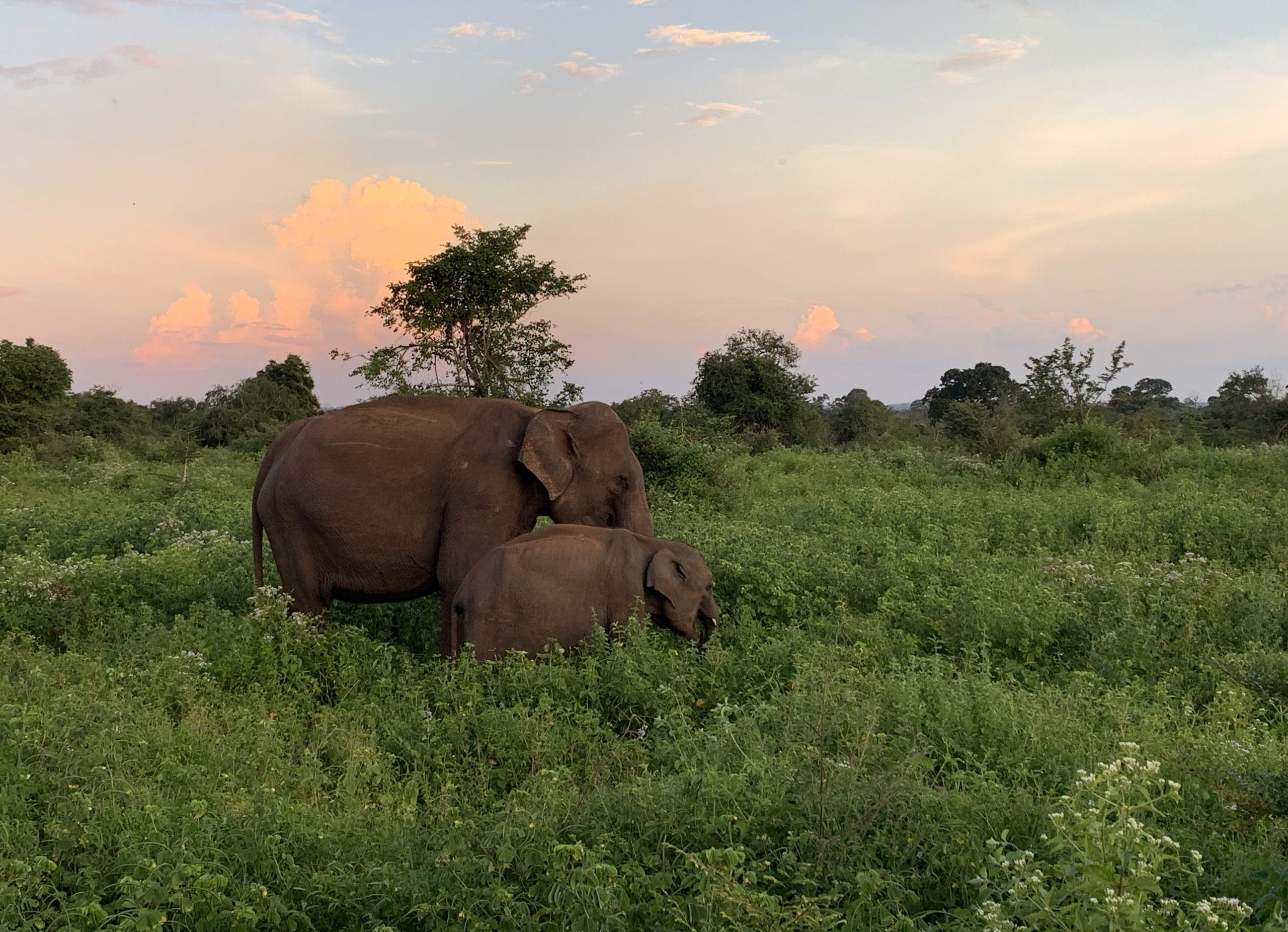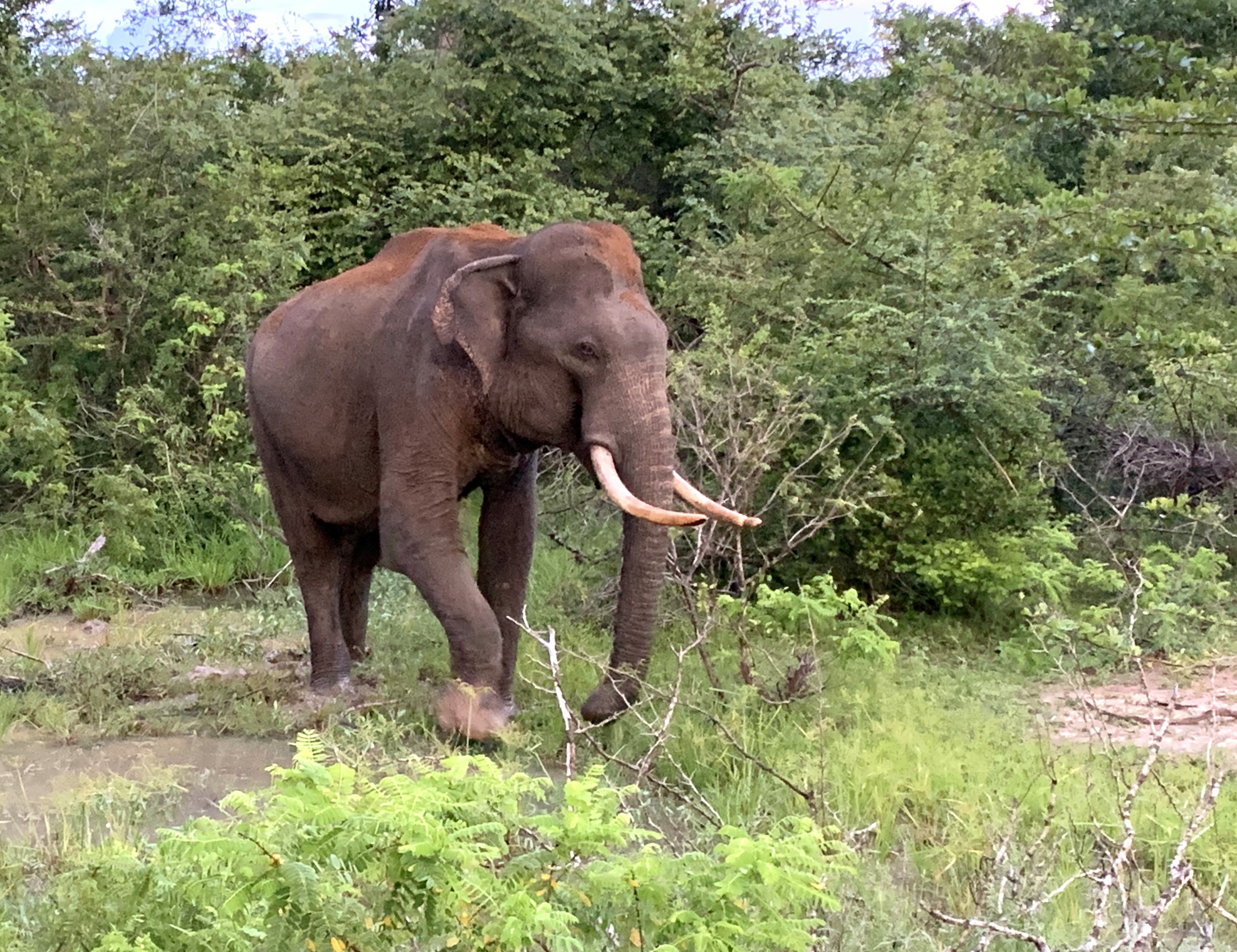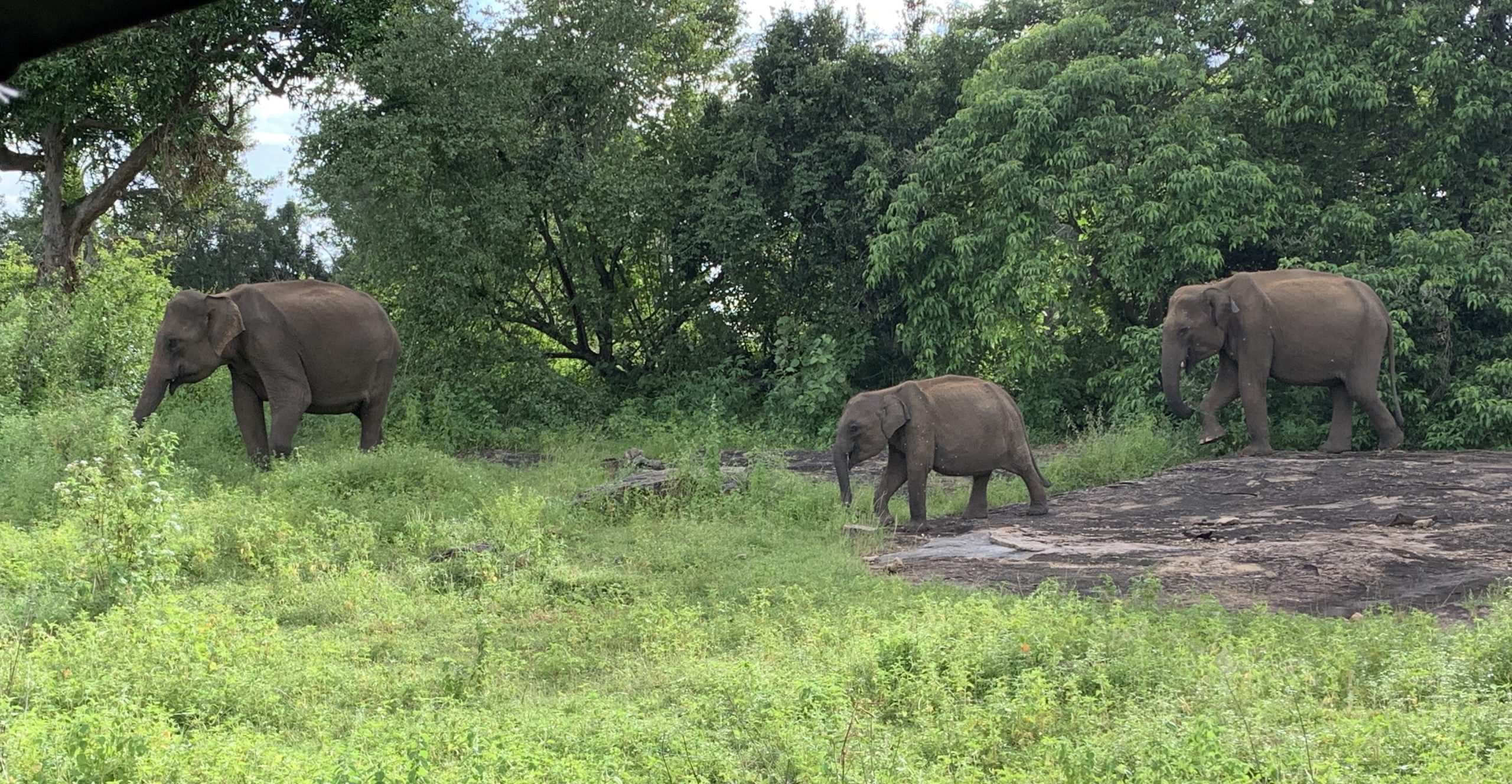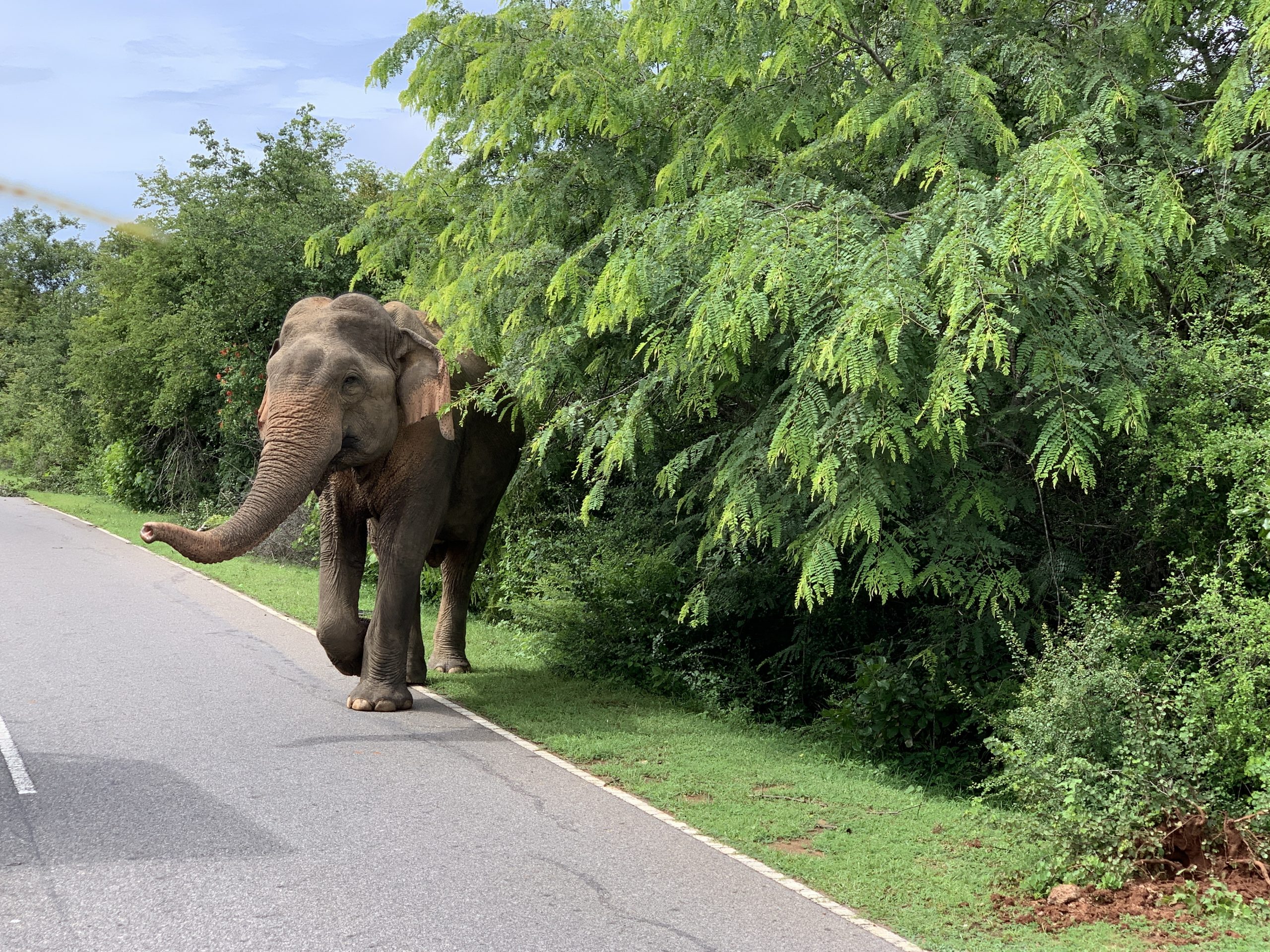There are about 6500 elephants in Sri Lanka and the population is rebounding.
On our travels in Sri Lanka, we see elephants several different places – both in the national parks and outside the national parks. With numerous trips to Africa, I have seen plenty of elephants before, but never before have I met an Asian elephant. On this trip to Sri Lanka, I spot many of these gentle giants and learn the differences between them and their African counterparts.

In the first place, the Asian elephants are smaller and have smaller ears. That was actually the only fact I already knew. Secondly, in Africa, all the elephants have tusks. Among Asian elephants only 20 percent of the males have tusks and the females not at all. That certainly helps the Asian species’ survival rate with regard to hunting them for ivory.

In the third place, African elephants get more wrinkly with age. I know the feeling. The Asian elephants, on the other hand, get more reddish. In general, they seem to have more of a blush than the grey African elephants, no matter age. Both African and Asian elephants are matriarchal. Woman power! Mature males hang around in bachelor groups or alone and only come together with the females for mating.

Both species have incredibly agile trunks with approximately 40,000 muscles. They use them for all kinds of tasks, from ripping down branches to reach juicy leaves, drinking, giving themselves showers and dust baths, and picking fruits and plants to smelling and feeling each other. The African elephant has two “fingers” at the end of its trunk, while the Asian elephant has only one. Neat, eh?
Watch how the elephants in this short video clear turf from the ground with their feet, then shake the turf to rid it of sand before eating the grass. What a great technique!
I also find out that Asian elephants are, shall we say, more people-friendly. I am used to having to wait for African elephants to move away before we drive our safari vehicles past them – or, if they don’t move away, we back up and leave the way we came. This does not seem to be necessary in Sri Lanka. Here, the safari vehicles drive right past, rather closely sometimes, and the elephants do not seem to give a hoot.

I even experienced one elephant on the road that approached our car and stuck its trunk right up to me!
There are approximately 6500 elephants in Sri Lanka and the number is increasing because they are protected. The human population is also growing and is now at about 22 million. Conflicts between humans and elephants are inevitable as humans encroach on elephant territory in order to farm the land. Around 150 people (0.0007 percent of the human population) die annually from elephant attacks. About 250 elephants (3.8 percent of the elephant population) die annually from unnatural, i.e. human, causes such as shooting injuries, getting hit by trains, electrocution and so on. Some say there is an elephant problem. Conversely, some would say there is a people problem.

